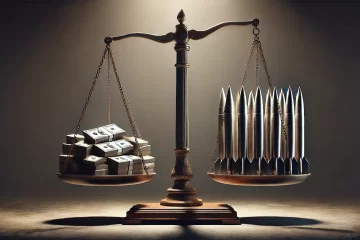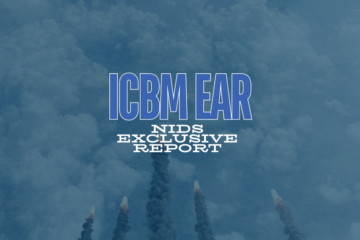This article was originally published on Eurasianet.
Sasna Tsrer, the gunmen behind a bloody 2016 rebellion, are forming a political party and positioning themselves as allies of the new government.
Among liberals, Sasna Tsrer may have the reputation of being a group of violent radicals, but in Armenia’s flamboyant political culture, its leader Jirair Sefilian presents a markedly sober image.
Prime Minister Nikol Pashinyan, a young liberal democrat, recently threatened to smash his opponents against the wall. The leader of the second-largest faction in Parliament, oligarch Gagik Tsarukyan, is a former world arm-wrestling champion who keeps a private zoo with lions. His party chair, Naira Zohrabyan, recently wore a Dolce & Gabbana dress in a farfalle pasta print to the floor of parliament. In Armenia, politics is one the most popular forms of entertainment, on par with football and Bollywood.
In this environment, Sefilian’s self-disciplined figure stands apart. The Lebanese-born military-commander-turned-opposition-figure is the leader of Armenia’s newest political party, Sasna Tsrer. The party takes its name from one of the most notorious episodes in Armenia’s recent history: the 2016 drama in which a group of armed men close to Sefilianseized a police station in Yerevan and held officers hostage; several were killed.
Belying that violent heritage, however, Sefilian himself presents a calm, measured image. He is soft-spoken, and, outside of TV studios – where he appears in a formal suit and white shirt – his sense of fashion can best be described as normcore, a “dad style” channeling deep indifference to all things sartorial.
On TV, Sefilian has two modes: When he speaks about the former ruling regime of presidents Robert Kocharyan and Serzh Sargsyan – his sworn enemies – he is serious, but never raises his voice. When interviewers ask about his own views and plans, he responds with a wry half-smile.
His plans now include leaving his direct-action days behind and running for office. Sasna Tsrer intends to hold its founding convention on September 29, after which it will formally file the paperwork to become a registered political party. It is a development that would have been impossible to imagine before April, when massive street protests led to Sargsyan stepping down after 10 years in office, and propelled Pashinyan into power.
What significance Sasna Tsrer will have is up for debate. Sefilian and his allies point to fundraising success, fueled by small donors, and a recent, enthusiastic town hall meeting in the city of Martuni, to indicate that they are poised to be the second-leading political force in the country behind Pashinyan and his Civil Contract party. “Even our worst enemies consider us number two,” said Garo Yegnukian, a lawyer and activist who is also one of Sasna Tsrer’s leaders.
But others are skeptical. “I think they’re overestimating themselves,” said Mikayel Zolyan, a Yerevan-based political analyst. “It’s not 2016 anymore, when they enjoyed popular support. I don’t expect them to get more than 5 to 10 percent of the vote” in upcoming parliamentary elections.
But Zolyan added that the emergence of Sasna Tsrer as a political party still portends significant political shifts in Armenia. “First, it’s always better to coopt hardliners into the system then leave them out of it,” he said. “Also, Sasna Tsrer brands itself as a force defending Armenia’s sovereignty, and that includes standing up to Russia. This can be convenient for Pashinyan. There’s already a number of pro-Russian actors. [..] If there’s no counterweight, Pashinyan could be forced to make concessions to Moscow.” With Sasna Tsrer in parliament, though, “Pashinyan can become a centrist figure.”
Hrachya Arzumanian, a Stepanakert-based political scientist, echoed this forecast. During negotiations with Russia, Pashinyan “can always point out that there are more radical political forces,” Arzumanian wrote on Facebook. “That gives the new prime minister room for maneuver. He wouldn’t need to advocate radical views and approaches. Sasna Tsrer will do that.”
From Beirut to Karabakh
Sefilian was born in Lebanon in 1967 and fought with Armenian militias in the civil war there. Sefilian still speaks Western Armenian, the dialect spoken among descendants of the Armenians who lived in what is now Turkey; Eastern Armenian is the language spoken in modern Armenia. To Yerevantsis, the dialect sounds like a Southern U.S. drawl to a Londoner: comprehensible, yet deeply foreign. (As a compromise, he writes Facebook posts in Eastern Armenian.)
In 1990, as part of the nationalist group Armenian Revolutionary Federation (ARF) Dashnaktsutyun, he went to Armenia, which was just embarking on a war with Azerbaijan over Nagorno-Karabakh. With his military experience from Lebanon he served as a military trainer, teaching soldiering basics to local volunteers.
That war, ultimately won by the Armenian side, produced the first generation of post-Soviet Armenian political leaders: former presidents Kocharyan and Sargsyan were both prominent Karabakh leaders. Even the current Armenian Church leader, Catholicos Karekin II, as a young bishop helped raise funds (and, some say, supply arms) for the cause.
While his former comrades-in-arms were capitalizing on their credentials and concentrating power, Sefilian found himself in a new struggle, this time a political one. “I never wanted to be a politician. I don’t enjoy politics,” Sefilian told Eurasianet in an interview. “But at some point I realized that the country needs people like me to go into politics.”
After Armenia and Azerbaijan signed a ceasefire in 1994, Sefilian returned to Beirut. He was unable to return to Armenia for several years because the country’s first president, Levon Ter-Petrosyan, had banned the ARF. In 1997 he made it back and upon his return he served briefly as a brigade commander in the de facto armed forces of Nagorno-Karabakh, reaching the rank of lieutenant colonel.
In the 1990s and 2000s, the Armenian government was actively working on a peace deal with Baku, which would include the return to Azerbaijan of some territories surrounding Nagorno-Karabakh that the Armenian forces also had seized during the war. Sefilian acted as spoiler, coordinating two initiatives: Defense of the Liberated Territories and Union of Armenian Volunteers. Both sought to mobilize Armenian society against any compromise. “We made our concession to Azerbaijan in 1994, when we stopped our offensive on its request. Otherwise that state would have already fallen apart,” he said at the time. He coordinated efforts to settle the territories in question with ethnic Armenians. He also tried to mobilize Armenians inJavakheti, a region in Georgia with a large ethnic-Armenian population.
Together with a close circle of like-minded nationalist activists, in 2012 Sefilian created a movement they called Founding Parliament, holding hundreds of rallies and traveling the country demanding regime change. While still focused on Karabakh, he also opposed Sargsyan’s domestic agenda, protesting widespread voter fraud and corruption. Successive governments responded by cracking down, and Sefilian has on and off spent more than three and a half of the last 12 years in prison.
Hardline figure
Throughout more than a decade of political activism, Sefilian had repeatedly said that he opposed the use of force. But his long years of nonviolent activism gained him only scant support in the country.
That all changed in July 2016. In April of that year, aresumption of fighting with Azerbaijan resulted in the deaths of 94 Armenian soldiers, including volunteers and reservists. Armenian forces lost three square miles of territory – insignificant strategically, but as the first substantial Azerbaijani advance since 1994, it was a psychological blow. Sefilian accused Sargsyan of downplaying the defeat. (The president said the lost territories were “of no strategic importance.”)
Sargsyan responded by cracking down. Sefilian was arrested and sentenced to over a decade in prison on charges of planning a coup and possessing illegal weapons. Pashinyan, at the time an opposition member of parliament, called the ruling a “a bogus verdict” and argued that Sefilian was a political prisoner.
A month later, an armed group of Sefilian allies calling itself Sasna Tsrer – “the Daredevils of Sassoun,” after an ancient Armenian epic – seized a police precinct on the outskirts of Yerevan. The gunmen demanded that Sargsyan step down. In the scuffle, they allegedly killed three policemen. The group admits to killing only one, saying he had opened fire after disregarding their calls to drop his weapon. (Last week, the father of one of the other officers said that he believed it was the police who killed his son, and not Sasna Tsrer.)
Although the gunmen claimed to act independently from Sefilian, they were known to be close to him and tried to negotiate his release while holding policemen hostage. As a result, his political allies suffered. “That was a weak argument, and the regime used the occasion to arrest me,” Andrias Ghukasyan, one of Sefilian’s former allies and founder of the Armenian Constructive Party, told Eurasianet.
During the crisis, Ghukasyan spoke at rallies in support of the takeover. At one rally, he said that “Yerevan showed that our society supports Sasna Tsrer’s demands. [… Sasna Tsrer] know what they are doing and how they’re doing it. […] Don’t forget who they are. Don’t worry, trust them. I trust them.”
In an interview, however, he expressed regret at his cooperation. Ghukasyan, along with dissidents Paruyr Hayrikyan and Heritage Party leader Raffi Hovannisian had made an alliance in 2015 to try to stop a controversial rewriting of the constitution, but they pledged to oppose the government without violence.
“The police precinct takeover was a violation of our agreement,” he told Eurasianet. Ghukasyan spent nearly two years in prison as a result. “National-revolutionary forces of a particular Middle-Eastern blend are always ready to sacrifice themselves, but also to sacrifice others.”
Today Sefilian embraces the legacy of the takeover. He is confident the gunmen eventually will be acquitted, arguing that their actions qualify as “rebellion against tyranny and oppression” as envisaged in the UN’s Universal Declaration of Human Rights. Asked about those who died as a result, he has said, “Serzh Sargsyan is guilty of bloodshed. This tragedy happened because of the oppressive system he built.”
Uncompromising positions
Since Pashinyan came to power, Sasna Tsrer’s leadership has consistently endorsed the new government and offered full cooperation. But they also have called on Pashinyan to dismiss the constitution, dissolve parliament and form a new provisional government, of which they would be part. In terms of geopolitics, Sasna Tsrer aims to launch a sort of Armexit, or “the liberation of Armenia from Russian colonial rule,” withdrawing Armenia from Russia-led organizations like the Eurasian Economic Union and the Collective Security Treaty Organization. “Russia can’t be our strategic ally. We can’t be allies. Armenians should understand that,” Sefilian said.
The group instead advocates for a strategic alliance with the West. Armenia should “ally itself with the United States and the West and regain its traditional role as a bridge-mediator for Iran and the region,” the group’s current four leaders said in a 2017 statement. They, however, said they opposed Armenia joining NATO.
The movement also holds irredentist views about Armenia’s borders. Sefilian said that he envisages an Armenia that includes the territories of Nakhichevan – an exclave of Azerbaijan that once had a large Armenian population – and eastern Turkey, or “Western Armenia,” the territories formerly inhabited by Armenians until the genocide of 1915.
Sefilian says that is a long-term goal, but some of his erstwhile allies aren’t so sure. Sasna Tsrer “cannot openly promote launching a new war, so they try to mask their rhetoric in order to avoid looking like the war party,” Ghukasyan said.
“Sasna Tsrer fits into the framework of populist parties on the rise in Europe, sometimes presenting a mix of leftist and nationalist ideas, but in general right-wing,” said Zolyan, the political analyst in Yerevan.
War hero, illegal alien
One significant obstacle to Sefilian’s political ambitions: his citizenship.
Born a Lebanese citizen, he has applied for Armenian citizenship repeatedly since 2003, but says his applications are always denied without explanation. His applications for permanent residency also have been denied, and technically he lives in Armenia illegally. He believes the authorities have been waiting for him to leave the country and then bar him from re-entering. So he hasn’t left Armenia in 18 years.
Sefilian reapplied for citizenship on August 1. In his application, he asked for it to be granted retroactively, overturning previous presidents’ decisions. “Armenian law doesn’t include a provision on issuing citizenship retroactively – but it doesn’t bar authorities from doing so, either,” Yegnukian said.
The decision will be crucial to his political career – one needs to be an Armenian citizen and permanent resident for at least four years to run for parliament. Thus, any outcome of Sefilian’s petition will have political ramifications. Pashinyan has not been shy about awarding Armenian citizenship to other prominent ethnic Armenians, including the Canadian-Armenian actress-director power couple Arsinee Khanjian and Atom Egoyan.
Neither an ally nor a competitor
Pashinyan and Sefilian had a common enemy in the old regime and have made a number of cooperating gestures over the years. In 2008, when Pashinyan first took the national stage to lead protests against fraudulent elections, Sefilian supported his cause in an open letter from jail. But the two have never directly collaborated.
“It was always a respectful attitude from both sides as far as I can remember,” Sefilian said. “We didn’t publicly disagree in those years, but rather tried to understand each other.”
When the two disagreed, it was about tactics rather than principles, Sefilian said. “There are two ways to make change – through elections and through civil disobedience,” Sefilian said. “We supported the second option. Nikol [Pashinyan] always tried to convince us that no, it’s possible through elections. Time proved that it was only possible through civil disobedience. Fortunately, Nikol succeeded in it.”
Sefilian was released this June with the help of a bond signed by thirteen members of parliament, including one member of Pashinyan’s party. Sefilian said he has met Pashinyan once since his release, and there have been a few occasions when he had to call the prime minister’s aides.
At least one vocal Sasna Tsrer supporter now has a high-level government job: David Sanasaryan led rallies in support of the group in 2016 and spent a month in jail as a result. He now heads the State Oversight Service, a watchdog that reports to the prime minister’s office.
“We have a constructive relationship,” Sefilian said of Pashinyan. “But we hope to deepen our relationships. We have to be together until there is a new, legitimate National Assembly.”
He also lobbied for a Sasna Tsrer role in the new cabinet. “We’re ready to be engaged,” Sefilian said, adding that the group envisions itself in the “power bloc” that includes the military, police, and the National Security Service. Another Sasna Tsrer leader, Colonel Varujan Avetisyan, served in different roles at the Ministry of Defense from 1994 to 2013, including as deputy chief of the ministry’s Defense Policy Center.
A spokesperson for Civil Contract told Eurasianet that “the question of collaboration hasn’t been discussed.” An op-ed in TASS, the Russian state news agency, suggested that if Sasna Tsrer joined the cabinet, it could be interpreted as “a move against Russia, which would be followed by an immediate response from Moscow.”
“The fact that he hasn’t stretched out his hand means that he’s afraid of the competition,” said Yegnukian, referring to Pashinyan.
Pashinyan is proving to be a troublesome ally. Not only is he reluctant to engage with new partners, but he has alienated some in his parliamentary faction, who in response have publicly criticized him and hinted that they may withdraw their support.
“Pashinyan now sees other political leaders as not worthy of partnering with him, as marginal figures,” Karen Aghekian, an editor for Hamatext, an online magazine covering Armenian politics, told Eurasianet.
But in the case that Pashinyan decides to build a coalition, it’s still highly unlikely he would invite Sasna Tsrer, Aghekian said. “I don’t think that of all parties, Nikol would associate himself with them. First, they’re vehemently anti-Russian, and some voters reject them based on the bloodshed,” he said, noting that Pashinyan had crusaded against Kocharyan for his use of violence in breaking up protests in 2008, making it tricky to fully embrace Sasna Tsrer.
Political scientist Zolyan agreed: “I think cooperation with Nikol is unrealistic. [Pashinyan] has little to gain from such a partnership.”
With or without Pashinyan, Sasna Tsrer’s leaders say they’re strategizing for the long term. Their headquarters in downtown Yerevan is open for visitors. One recent visitor, a Western official, said the bustling office “felt like Smolny in 1917.” The Smolny Institute was the Bolshevik headquarters during the Russian Revolution.
About the Author
Grigor Atanesian
Grigor Atanesian is a freelance journalist who covers Armenia.



